IRONMAN Announces Performance-Based Qualifying for Kona and 70.3 World Championship
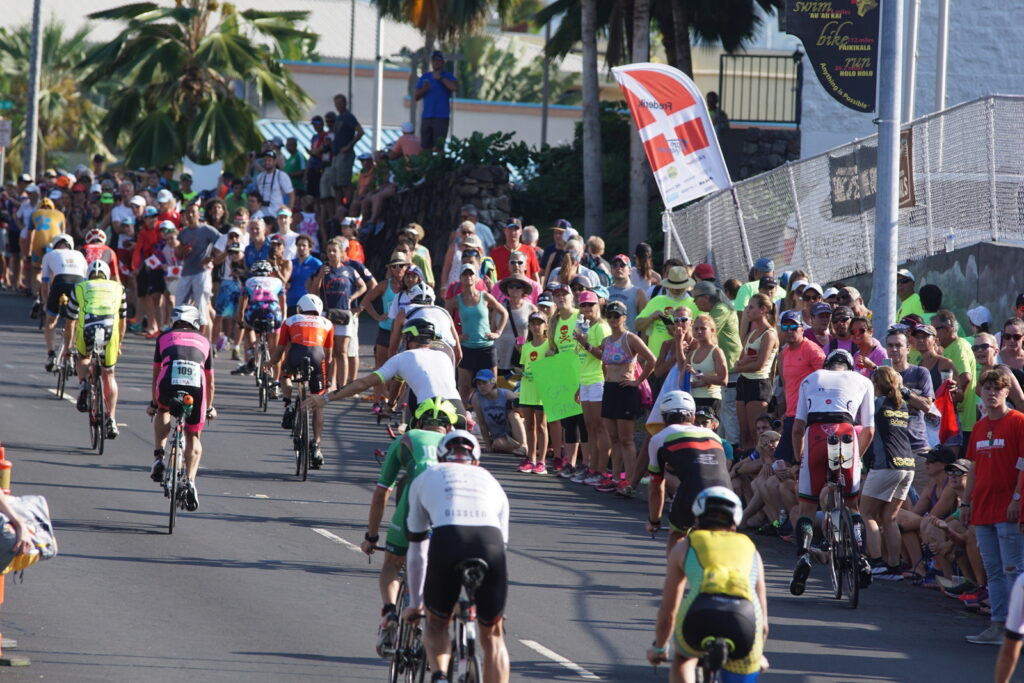
Athletes compete at the IRONMAN World Championship. Photo: Kevin Mackinnon
Despite all the back and forth that we’ve been seeing about Kona qualifying over the last few months, IRONMAN hadn’t actually released a policy – until today. There was lots of gnashing and gnarling of teeth over IRONMAN CEO Scott DeRue’s description of a “mostly proportionate” split of men and women for the 2026 IRONMAN World Championship in Kona, when both the men and women will compete. Turns out that “proportional” statement was derived from the initial research IRONMAN was doing into the new system, which they’re describing as a performance-based program that rewards athletes (i.e. gets them a Kona or 70.3 worlds slot) based on how close they are to a standardized age group time.
There’s little argument from athletes and triathlon pundits that the move to one-day in Kona makes sense and is what IRONMAN athletes want. (I’m assuming that everyone understands that the community in Kona has made it abundantly clear that they have no interest in two days of racing on the Big Island.) What has got many people up in arms is the plans on how to distribute the 2,500 – 3,000 slots that IRONMAN is planning to have competing in Kona. IRONMAN had had to juggle the fact that women make up 18% of the typical IRONMAN field with the (quite reasonable, in my opinion) demands that the field be equally split by gender. With two days of racing at the IRONMAN 70.3 World Championship, IRONMAN has no problems offering the same number of slots for both races (and, therefore, for both genders). When there’s just one day of racing, though, allotting 50% of the spots to 18% of your clientele has been a trickier prospect.
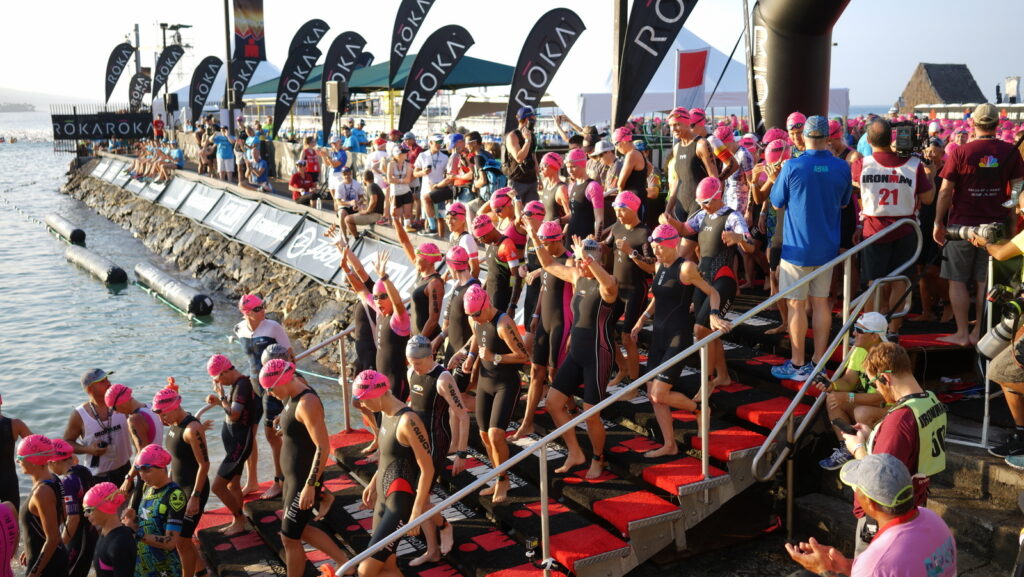
Photo: Kevin Mackinnon
According to IRONMAN’s run through of the current qualifying system, between 30 and 40 per cent of the field will be women.
The New System
- As always, each qualifying race will have a certain number of qualification slots for each world championship – either Kona, or the men’s or women’s IRONMAN 70.3 World Championship.
- The winner of each age group will automatically get a qualifying slot. Those slots can roll down, but only to the top three finishers. If the spot is not taken by one of those athletes, the spot goes into the “Performance Pool” of qualifying slots to the “next-most competitive athletes at the same event.”
- That “competitive” list is generated based on the ranking of the athletes based on their age-graded finish times.
- That “age-graded” chart is developed based on “averaging the top 20% of World Championship finish times over the past five editions for each age group … (which) creates an age-graced finish time for each athlete.”
- The roll down process will be distributed to the most competitive athletes (based on the age-graded times) who did not receive one of the automatic qualification slots.
According to IRONMAN, the seeds of this new system started back in 2019, but things were put on hold due to the COVID Pandemic. The announcement of a return to racing in Kona, with one day of racing, prompted the return to a search for a new, performance-based qualifying system. DeRue also credits “the many athletes and community members who provided constructive feedback as we ideated on potential approaches. Their feedback was instrumental in helping us develop the new system, and feedback from our community will continue to be critical to our ongoing development of the system.”
“We are excited to unveil our new qualification pathway for the pinnacle events of triathlon, the IRONMAN World Championship and IRONMAN 70.3 World Championship,” DeRue continued. “These events have grown over the decades to earn their place as the greatest celebration of the most competitive and committed triathletes in the world. As we continue to evolve these world championship events and inspire more triathletes to chase their dreams to compete at the highest level, we wanted to ensure our slot allocation system rewards the most competitive age-group athletes. The new approach achieves this goal by promoting a performance-based standard for all athletes and ensuring slots roll to the most deserving athlete, regardless of their age or gender.”
The new system comes into effect this weekend at the IRONMAN 70.3 Jönköping European Championship and IRONMAN 70.3 Muskoka, while the first Kona qualifying slots for 2026 will be handed out at IRONMAN Kalmar on August 16-17. You can get the full details on the new qualifying system at www.ironman.com/qualifications.
Age-Graded Finish Times
IRONMAN worked with Sportstats, the timing company that times all of IRONMAN’s North American events, to develop the new benchmark system.
According to IRONMAN:
For the IRONMAN World Championship race, the Kona Standard was created. It is based on a rolling five-year period of results from the top 20% of finishers for each age group at IRONMAN World Championship events in Kona, Hawai`i. These top 20% finisher times are used to determine a benchmark for each age group by gender. After normalizing the results to account for any outliers, we arrived at a global “Kona Standard” for each age group and gender that can be used to assess the relative performance of athletes at any race around the world (i.e., age-graded finish times). At qualifying events, these age-graded finish times will be rank-ordered, and irrespective of age or gender, the most competitive athletes at any given race will qualify to compete at the IRONMAN World Championship triathlon in Kona, Hawai`i.
The difference for the IRONMAN 70.3 World Championship is that the age-graded standards will be developed for men and women separately.
The IRONMAN 70.3 World Championship race will use the same approach. We created an IRONMAN 70.3 Standard (‘70.3 Standard’) by averaging the top 20% of finishers for each age group from the previous five IRONMAN 70.3 World Championship events. This 70.3 Standard for each age group is the benchmark for assessing the relative performance of athletes (i.e., the age-graded finish times). At each qualifying event, these age-graded finish times will be ranked for women and men separately, as women and men will qualify for their respective day at the annual IRONMAN 70.3 World Championship. As a result, the most competitive male and female athletes relative to their age groups will qualify for the IRONMAN 70.3 World Championship triathlon.
The benchmark times will be reevaluated every year based on the previous five year rolling average.
IRONMAN is also creating an “IRONMAN Championship Competition Advisory Group to “provide a forum for age-group athletes to offer input and feedback on the new qualification system and to help identify any elements of the system that need to be refined.”
Practical Terms
The new system will make a big difference for age categories that might have, in the past, been extremely competitive, but not had enough competitors to warrant more than one qualifying slot. So, if you had two former IRONMAN world champions competing in the 70 to 74 age group, only one of those would likely have come away with a Kona slot at the end of the day, even if they had both put together outstanding race performances. The new system is more likely to reward both athletes.
Sample Data
Here’s the documentation that IRONMAN provided with some data around the qualifying process:
Key Terms
Kona Standard
A performance benchmark that is used to equalize age group athletes’ finisher times. The standard is created by taking a rolling five years of finisher data from the IRONMAN World Championship (Kona), and isolating the top 20% of performances, per age group. From each age group sample an average is created, resulting in one representative fastest finisher time per age group per gender. The fastest finisher time among the age groups is identified and all other average age group times (standards) are compared back to the fastest finish time to generate a relative ratio for each age group. Then, the data is normalized, to create a fair comparison across genders.
The Kona Standard will change from one year to the next as the rolling five years of data changes. This serves as a consistent benchmark that evolves as finisher times improve from year to year.
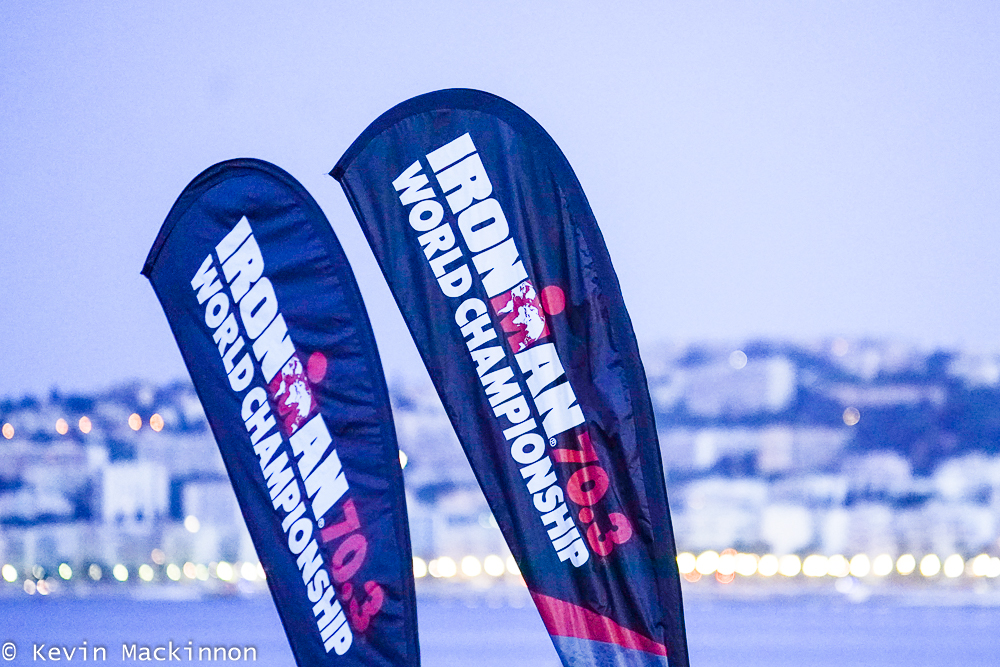
IRONMAN 70.3 Standard (‘70.3 Standard’)
A performance benchmark that is used to equalize age group athletes’ finisher times. The standard is created by taking a rolling five years of finisher data from the IRONMAN 70.3 World Championship events, and isolating the top 20% of performances, per age group. From each age group sample an average is created, resulting in one representative fastest finisher time per age group per gender. The fastest finisher time among the age groups is identified and all other average age group times (standards) are compared back to the fastest finish time to generate a relative ratio for each age group.
The IRONMAN 70.3 Standard will change from one year to the next as the rolling five years of data changes. This serves as a consistent, benchmark that evolves as finisher times improve from year to year.
Normalization
An adjustment that accounts for performance differences between genders, allowing men and women to be fairly ranked together after age grading. This is applied to IRONMAN World Championship results only, as men and women will race on the same day.
Age Grading
The method that adjusts each athlete’s time based on their age, against the fastest age group, allowing athletes of different ages to be compared fairly.
Age Graded Finish Time
The athlete’s finish time after applying the Normalized Age Grading. This represents their performance that is comparable to any athlete in the field.
Automatic Qualifying Slot
A World Championship qualifying slot that is guaranteed to each Age Group winner at any given event. If the Age Group winner declines the slot, it will be offered to (roll) to the second-place finisher, and then to the third-place finisher if not taken by the second-place finisher. If the Automatic Qualifying Slot for a specific age group is not taken by one of the top three finishers, that slot is then allocated to the overall ‘Performance Pool’ of qualifying slots that will then be offered to the next-most competitive athletes at the same event.
Performance Pool Slot
This is the amount of Age Group qualifying slots that remain after the Automatic Qualifying Slots are allocated to the Age Group winners. Performance Pool slots are offered to the next-most competitive athletes at the same event once the Age Grading system is applied.
To do so, all remaining athletes are ranked based on their age-graded finish times (i.e., their performance in the race relative to their own age-group standard); the athletes who are most competitive on race day relative to their age-group standard will rank highest.
Slots from the Performance Pool will then be allocated using a ‘first to accept’ roll-down process, starting from the highest ranked athletes. This roll-down process will continue until all qualifying slots are allocated.
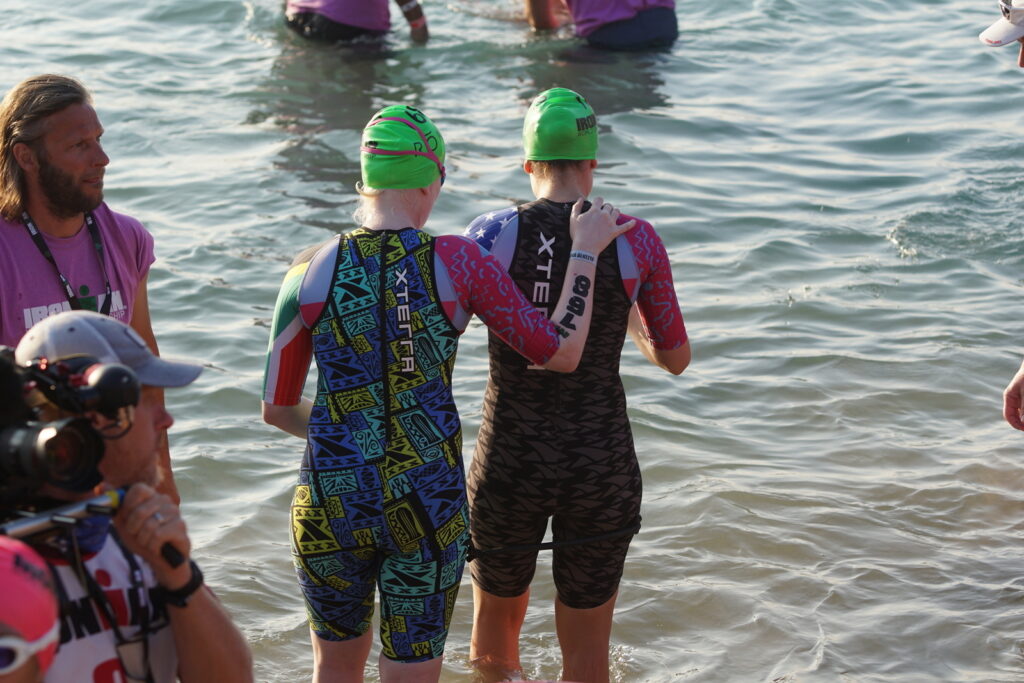
Photo: Kevin Mackinnon
B: IRONMAN World Championship Normalized Age Grading Table
| Kona Standard | ||
| Age Group | Men | Women |
| 18-24 | 0.9698 | 0.8567 |
| 25-29 | 0.9921 | 0.8961 |
| 30-34 | 1.0000 | 0.8977 |
| 35-39 | 0.9895 | 0.8866 |
| 40-44 | 0.9683 | 0.8707 |
| 45-49 | 0.9401 | 0.8501 |
| 50-54 | 0.9002 | 0.8125 |
| 55-59 | 0.8667 | 0.7778 |
| 60-64 | 0.8262 | 0.7218 |
| 65-69 | 0.7552 | 0.6828 |
| 70-74 | 0.6876 | 0.6439 |
| 75-79 | 0.6768 | 0.5521 |
| 80-84 | 0.5555 | TBD* |
| 85-89 | 0.5416 | TBD* |
*Note: the Women 80-84 and 85-89 age groups are TBD because, over the past 5 years of racing the IRONMAN World Championship in Kona, there have not been any finishers in these age groups. The Kona Standard will be updated when we have finishers in these age groups.
- IRONMAN 70.3 World Championship Age Grading Table
| IRONMAN 70.3 Standard | ||
| Age Group | Men | Women |
| 18-24 | 1.000 | 0.9921 |
| 25-29 | 0.9929 | 1.0000 |
| 30-34 | 0.9655 | 0.9828 |
| 35-39 | 0.9500 | 0.9658 |
| 40-44 | 0.9262 | 0.9426 |
| 45-49 | 0.8978 | 0.9192 |
| 50-54 | 0.8833 | 0.9016 |
| 55-59 | 0.8565 | 0.8746 |
| 60-64 | 0.8192 | 0.8391 |
| 65-69 | 0.7640 | 0.7775 |
| 70-74 | 0.7119 | 0.7348 |
| 75-79 | 0.6419 | 0.6234 |
| 80-84 | 0.5095 | TBD* |
| 85-89 | 0.5402 | TBD* |
*Note: the Women 80-84 and 85-89 age groups are TBD because, over the past 5 years of racing the IRONMAN 70.3 World Championship, there have not been any finishers in these age groups. The IRONMAN 70.3 Standard will be updated when we have finishers in these age groups.
D. Examples
IRONMAN World Championship qualifying example:
Anne is 42, she finishes IRONMAN Kalmar in 9:19:51, giving her an age-graded finish time of 8:07:26, applying the Kona Standard of 0.8707 (9:19:51 x 0.8707 = 8:07:26). John is 43 and finishes IRONMAN Kalmar in 8:50:31, giving him an age-graded time of 8:33:42, applying the Kona Standard of 0.9683 (8:50:31 x 0.9683 = 8:33:42).
Anne would rank above John in the age-graded rankings due to her age-graded time of 8:07:26 being faster than John’s age-graded finish time of 8:33:42.
| Finish Time | Kona Standard | Age-Graded Finish Time | |
| Anne F40-44 | 9:19:51 | 0.8707 | 8:07:26 |
| John M40-44 | 8:50:31 | 0.9683 | 8:33:42 |
IRONMAN 70.3 World Championship qualifying example:
Laura is 38, she finishes IRONMAN 70.3 Geelong in 7:29:01, giving her an age-graded finish time of 7:13:40, applying the IRONMAN 70.3 Standard of 0.9658 (7:29:01 x 0.9658 = 7:13:40). Janine is 51 and finishes IRONMAN 70.3 Geelong in 8:00:28, giving her an age-graded finish time of 7:10:56, applying the IRONMAN 70.3 Standard of 0.9016 (8:00:28 x 0.9016 = 7:13:11).
Janine would rank above Laura in the age-graded rankings due to her age-graded time of 7:13:11 being faster than Laura’s age-graded finish time of 7:13:40.
| Finish Time | IRONMAN 70.3 Standard | Age-Graded Finish Time | |
| Laura F35-39 | 7:29:01 | 0.9658 | 7:13:40 |
| Janine F50-54 | 8:00:28 | 0.9016 | 7:13:11 |
E. Simulated finish time examples by age group
Using 2024 race finisher data, the below table represents simulated slot allocation when the new methodology is applied. For each age group and gender, this provides an illustration of the finish time that an athlete would have needed to achieve to earn the last slot allocated at 2024 IRONMAN Texas North American Championship and 2024 IRONMAN 70.3 Alcúdia-Mallorca.
- Simulated IRONMAN World Championship last slot finish times: 2024 IRONMAN Texas data
| 2024 Race Example | Division | Last Slot Finish Time (non-graded) |
| IRONMAN Texas | F18-24 | 10:00:42 |
| IRONMAN Texas | F25-29 | 10:41:55 |
| IRONMAN Texas | F30-34 | 09:46:44 |
| IRONMAN Texas | F35-39 | 09:59:03 |
| IRONMAN Texas | F40-44 | 09:33:52 |
| IRONMAN Texas | F45-49 | 10:55:14 |
| IRONMAN Texas | F50-54 | 11:06:06 |
| IRONMAN Texas | F55-59 | 11:37:37 |
| IRONMAN Texas | F60-64 | 12:48:55 |
| IRONMAN Texas | F65-69 | 14:56:48 |
| IRONMAN Texas | F70-74 | 14:39:54 |
| IRONMAN Texas | M18-24 | 09:00:46 |
| IRONMAN Texas | M25-29 | 08:54:16 |
| IRONMAN Texas | M30-34 | 08:45:58 |
| IRONMAN Texas | M35-39 | 08:32:22 |
| IRONMAN Texas | M40-44 | 09:05:55 |
| IRONMAN Texas | M45-49 | 09:22:48 |
| IRONMAN Texas | M50-54 | 09:49:54 |
| IRONMAN Texas | M55-59 | 10:02:15 |
| IRONMAN Texas | M60-64 | 10:41:53 |
| IRONMAN Texas | M65-69 | 11:38:43 |
| IRONMAN Texas | M70-74 | 12:45:40 |
| IRONMAN Texas | M75-79 | 14:52:57 |
- Simulated IRONMAN 70.3 World Championship – Women’s Race last slot finish times: 2024 IRONMAN 70.3 Alcúdia-Mallorca data
| 2024 Race Example | Division | Last Slot Finish Time (non-graded) |
| 70.3 Alcúdia-Mallorca | F18-24 | 05:33:57 |
| 70.3 Alcúdia-Mallorca | F25-29 | 04:41:57 |
| 70.3 Alcúdia-Mallorca | F30-34 | 04:42:37 |
| 70.3 Alcúdia-Mallorca | F35-39 | 04:55:10 |
| 70.3 Alcúdia-Mallorca | F40-44 | 05:10:49 |
| 70.3 Alcúdia-Mallorca | F45-49 | 05:05:45 |
| 70.3 Alcúdia-Mallorca | F50-54 | 04:58:07 |
| 70.3 Alcúdia-Mallorca | F55-59 | 05:37:10 |
| 70.3 Alcúdia-Mallorca | F60-64 | 05:54:33 |
| 70.3 Alcúdia-Mallorca | F65-69 | 05:59:40 |
| 70.3 Alcúdia-Mallorca | F70-74 | 08:07:19 |
- Simulated IRONMAN 70.3 World Championship – Men’s Race last slot finish times: 2024 IRONMAN 70.3 Alcúdia-Mallorca data
| 2024 Race Example | Division | Last Slot Finish Time (non-graded) |
| 70.3 Alcúdia-Mallorca | M18-24 | 04:23:13 |
| 70.3 Alcúdia-Mallorca | M25-29 | 04:12:42 |
| 70.3 Alcúdia-Mallorca | M30-34 | 04:15:32 |
| 70.3 Alcúdia-Mallorca | M35-39 | 04:15:36 |
| 70.3 Alcúdia-Mallorca | M40-44 | 04:20:39 |
| 70.3 Alcúdia-Mallorca | M45-49 | 04:27:56 |
| 70.3 Alcúdia-Mallorca | M50-54 | 04:25:18 |
| 70.3 Alcúdia-Mallorca | M55-59 | 04:48:08 |
| 70.3 Alcúdia-Mallorca | M60-64 | 04:40:53 |
| 70.3 Alcúdia-Mallorca | M65-69 | 05:16:18 |
| 70.3 Alcúdia-Mallorca | M70-74 | 06:24:35 |
| 70.3 Alcúdia-Mallorca | M75-79 | 07:18:11 |
Continue the discussion at forum.slowtwitch.com
550 more replies
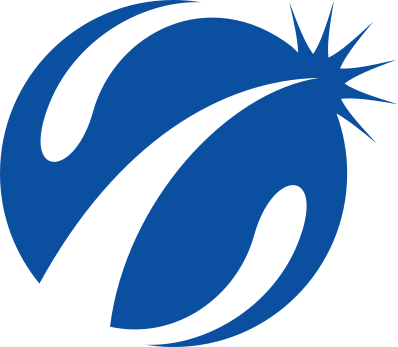

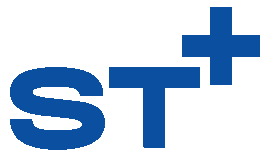

Since math is not my super power, this quote makes the most sense to me and seems very reasonable.
That’s a lot to read and read again and again. I’m still confused on slot allocation.
Race morning: You need to win, there is no other certainty to getting a spot. Otherwise you still have to wait until the race is over to know if you have a chance at going
do you also have to wait now until all age groups finish to know too? previously you could just wait for the top 10-20 to finish in your ag…
Thanks, i edited my post after figuring that out but then saw you replied.
Yeah, so the main shift is from “there are this many slots allocated to my AG based on number of finishers, so I need to get at least xth place to guarantee a slot” to “just worry about executing your best race because you now need one of the top, say, 50 best age/gender adjusted times to guarantee a slot”
Lost the will to live halfway through reading it. Does it take into account the course raced when calculating a time? If it’s a blanket time then those racing pancake flat, easy courses are going to gain an advantage.
Edit - same for those who race through diabolical weather compared to those with more favourable conditions.
No, each race still gets a set number of slots and you’re only competing with the other athletes in that race on that day
So will awards have 1000 people waiting for the math to see if they got a slot?
Ironman can now keep the expo open for an additional day!
I don’t think so. If you know you went fast and there’s a chance, then yes. Maybe top 5ish from each age group?
If you’re slow anyway like me, you still aren’t going to awards.
LOL! I don’t want to say it seems needlessly complicate until seeing it in a practical application…but boy that’s a lot. I’m also not sure this in and of itself will achieve the desired goals of additional women participation. It certainly help the vanishingly small cohort of uber competitive women to get slots but I’m not clear how that changes the reality that women aren’t as interested in IM. The “study” done trying to show that the women’s field was more competitive had a lot of flaws,
Also interesting they don’t call out if WomenForTri, Legacy/Lottery, Celebrity spots/Sponsor exemptions, any other initiatives will still receive slots to give out to championships or not?
Yeah, the simple approach would be to apply your age/gender adjustment to your time and see if it starts beating out times from faster AGs. If yes, then maybe start looking into it; if no, then go get brunch.
The last thing I’m going to be doing after an Ironman is math, lol. Hopefully the app will be updated with auto option to see our placement.